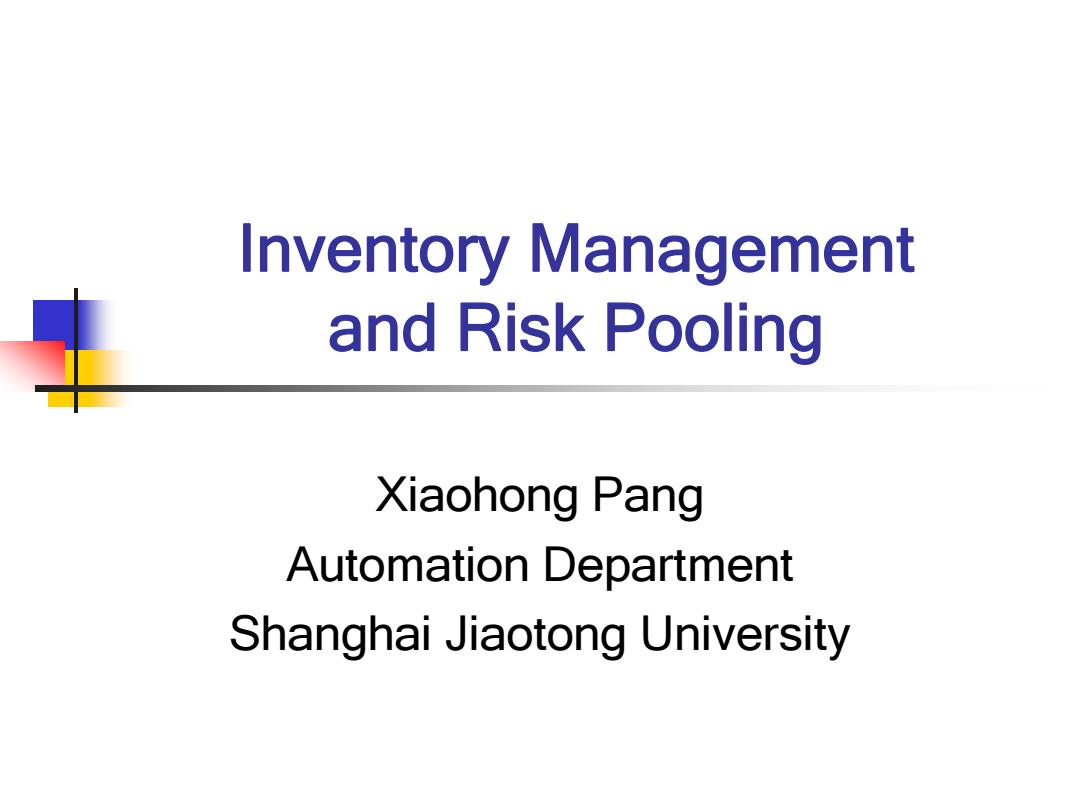
Inventory Management and Risk Pooling Xiaohong Pang Automation Department Shanghai Jiaotong University
Inventory Management and Risk Pooling Xiaohong Pang Automation Department Shanghai Jiaotong University
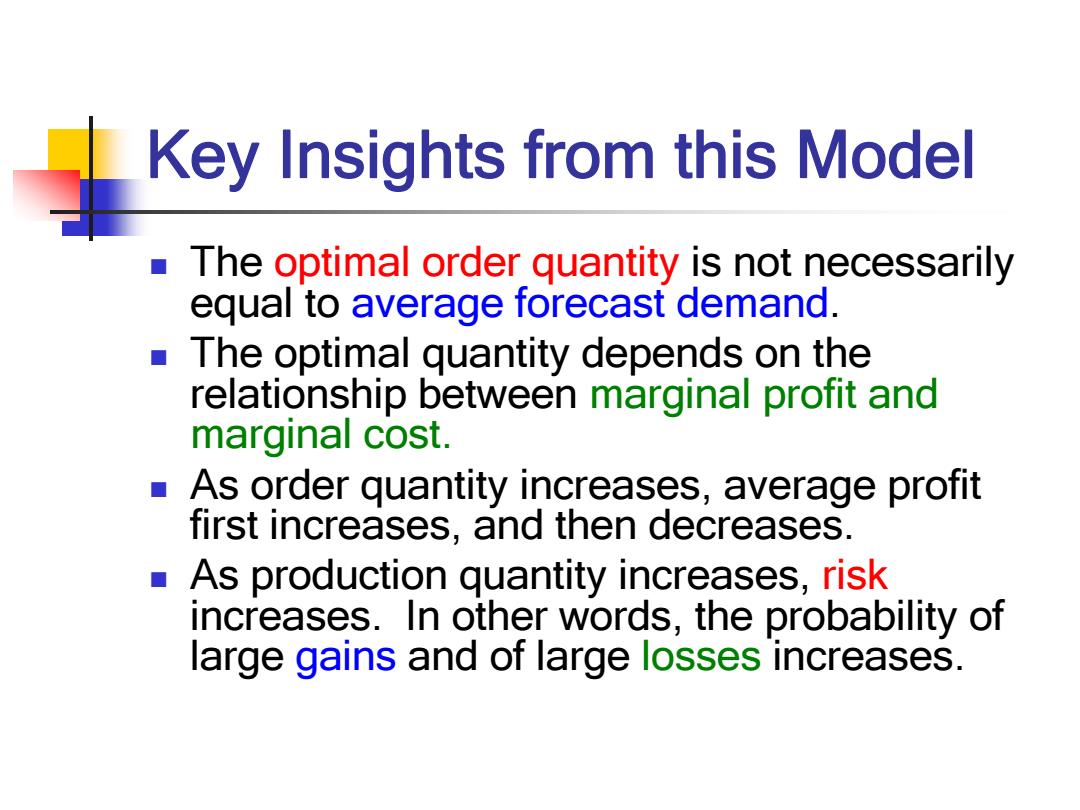
Key Insights from this Model The optimal order quantity is not necessarily equal to average forecast demand The optimal quantity depends on the relationship between marginal profit and marginal cost. As order quantity increases,average profit first increases,and then decreases. As production quantity increases,risk increases.In other words,the probability of large gains and of large losses increases
Key Insights from this Model The optimal order quantity is not necessarily equal to average forecast demand. The optimal quantity depends on the relationship between marginal profit and marginal cost. As order quantity increases, average profit first increases, and then decreases. As production quantity increases, risk increases. In other words, the probability of large gains and of large losses increases
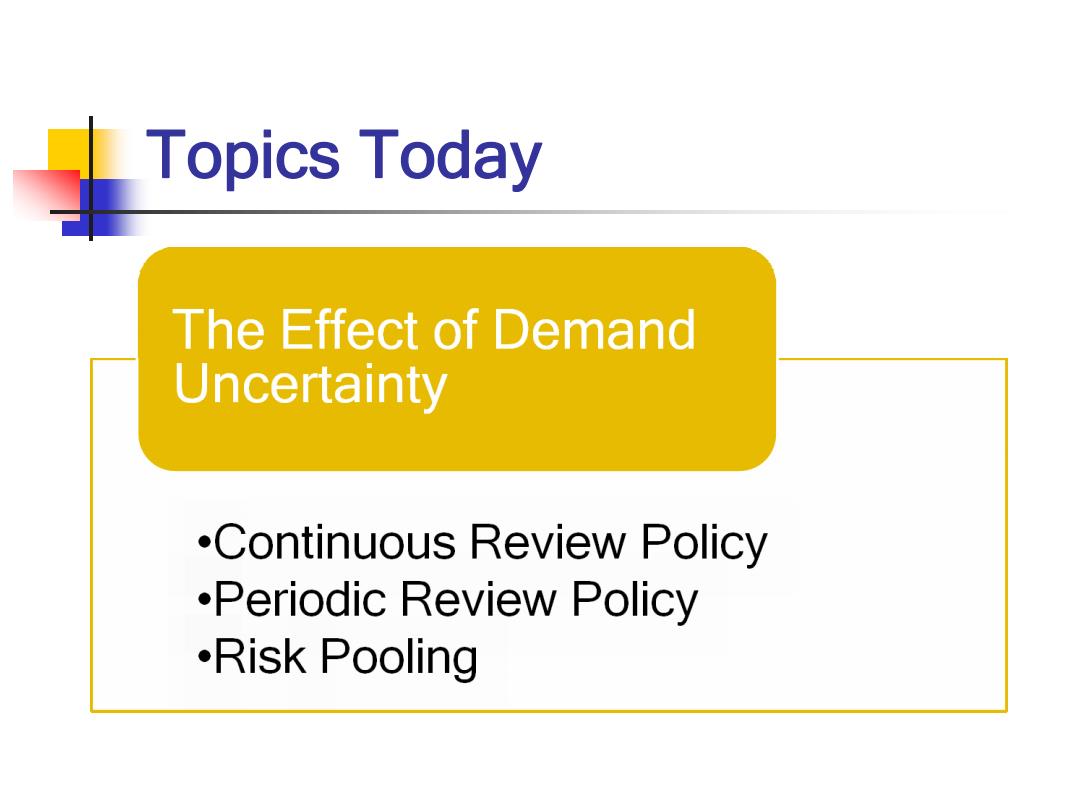
Topics Today The Effect of Demand Uncertainty .Continuous Review Policy .Periodic Review Policy .Risk Pooling
Topics Today
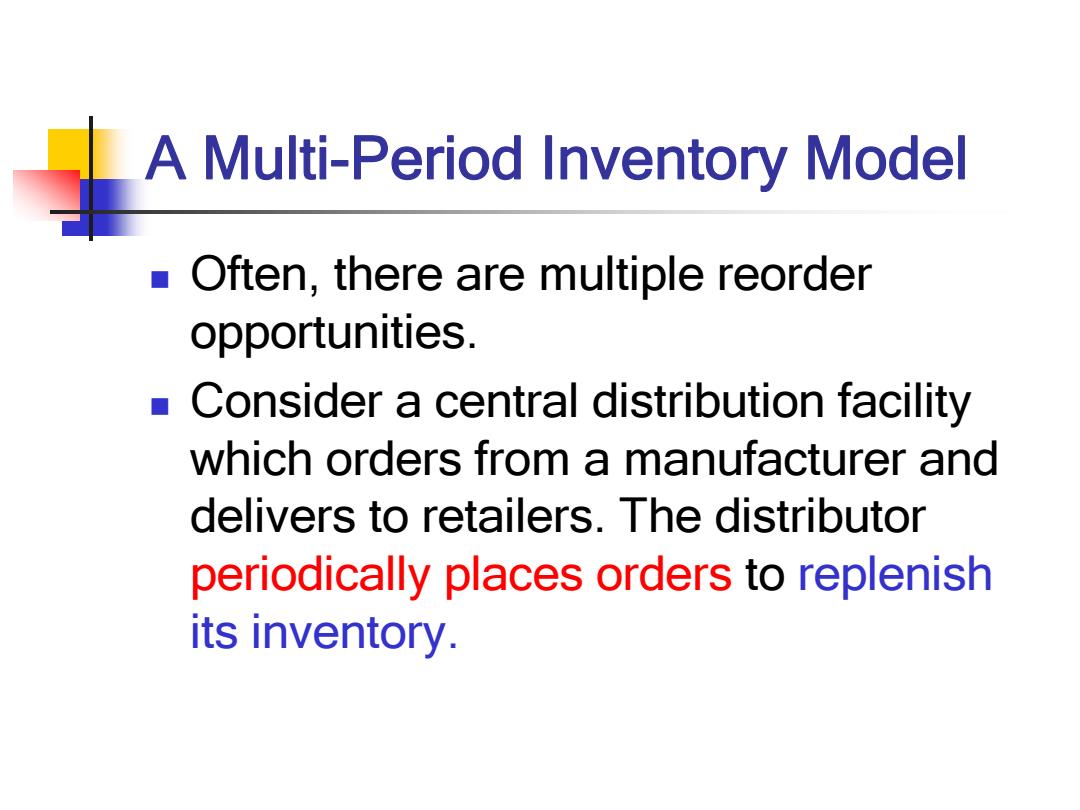
A Multi-Period Inventory Model Often,there are multiple reorder opportunities. ■ Consider a central distribution facility which orders from a manufacturer and delivers to retailers.The distributor periodically places orders to replenish its inventory
A Multi-Period Inventory Model Often, there are multiple reorder opportunities. Consider a central distribution facility which orders from a manufacturer and delivers to retailers. The distributor periodically places orders to replenish its inventory
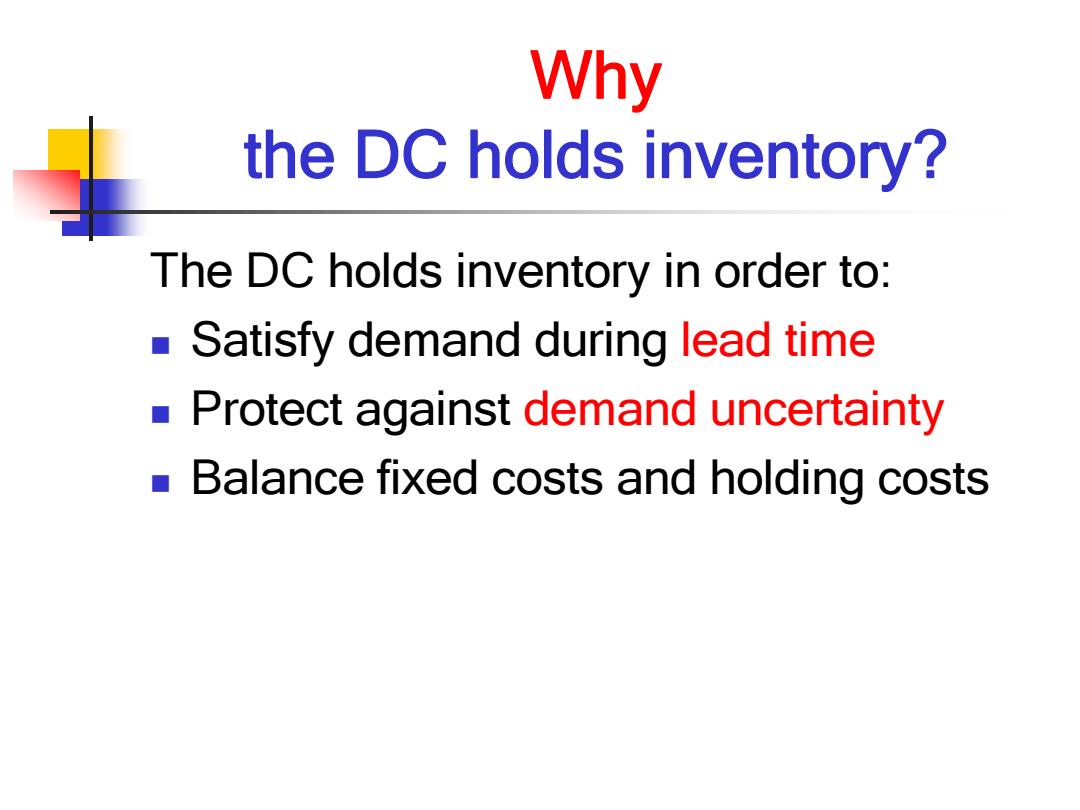
Why the DC holds inventory? The DC holds inventory in order to: Satisfy demand during lead time Protect against demand uncertainty Balance fixed costs and holding costs
Why the DC holds inventory? The DC holds inventory in order to: Satisfy demand during lead time Protect against demand uncertainty Balance fixed costs and holding costs
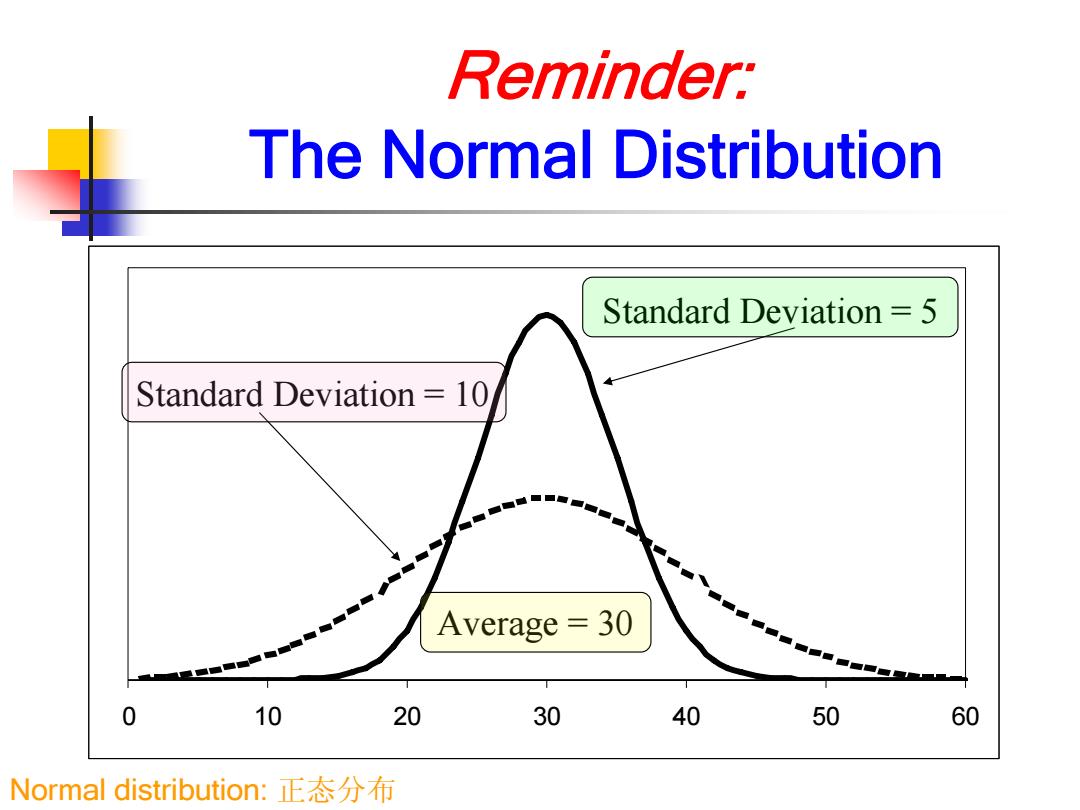
Reminder. The Normal Distribution Standard Deviation=5 Standard Deviation =10 Average 30 0 10 20 30 40 50 60 Normal distribution:正态分布
Reminder: The Normal Distribution 0 10 20 30 40 50 60 Average = 30 Standard Deviation = 5 Standard Deviation = 10 Normal distribution: 正态分布
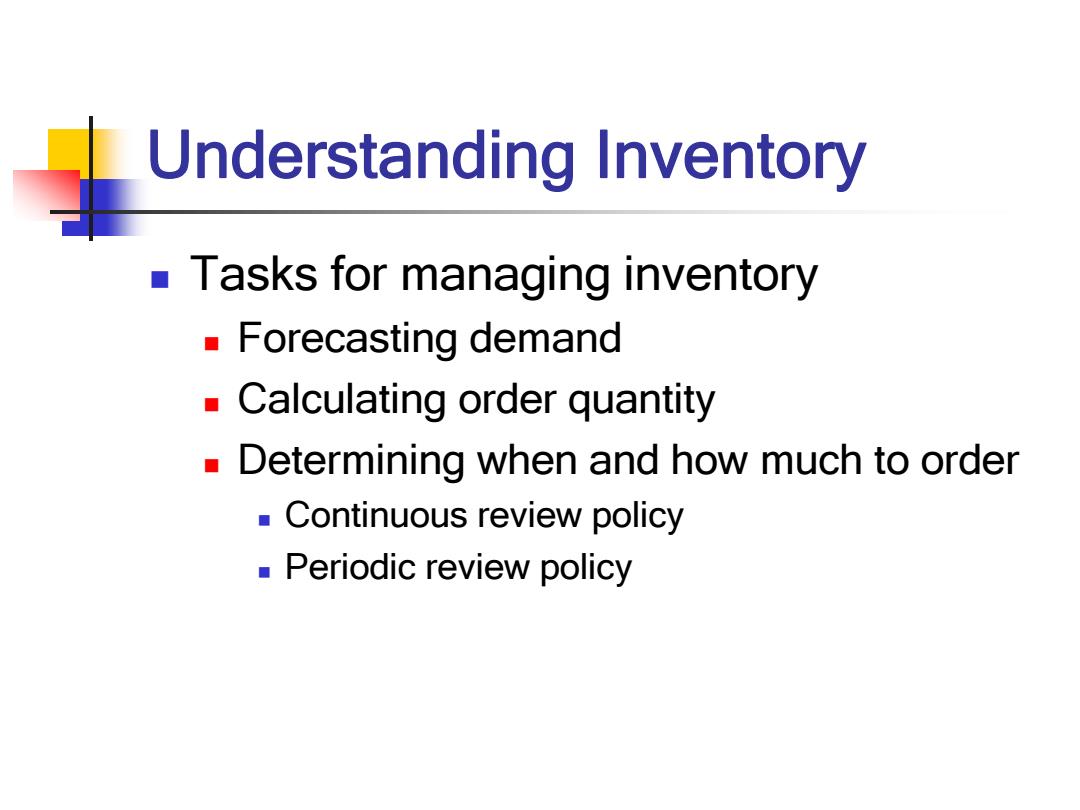
Understanding Inventory Tasks for managing inventory Forecasting demand Calculating order quantity Determining when and how much to order Continuous review policy Periodic review policy
Understanding Inventory Tasks for managing inventory Forecasting demand Calculating order quantity Determining when and how much to order Continuous review policy Periodic review policy

Continuous Review Policy: Assumptions Daily demand is random,follows a normally distribution Fixed order cost plus a cost proportional to amount ordered Inventory holding cost is charged per item per unit time If an order arrives and there is no inventory on hand,the order is lost The distributor has a required service level This is expressed as the likelihood that the distributor will not stock out during lead time. Intuitively,how will this affect our policy?
Daily demand is random, follows a normally distribution Fixed order cost plus a cost proportional to amount ordered Inventory holding cost is charged per item per unit time If an order arrives and there is no inventory on hand, the order is lost The distributor has a required service level This is expressed as the likelihood that the distributor will not stock out during lead time. Intuitively, how will this affect our policy? Continuous Review Policy: Assumptions
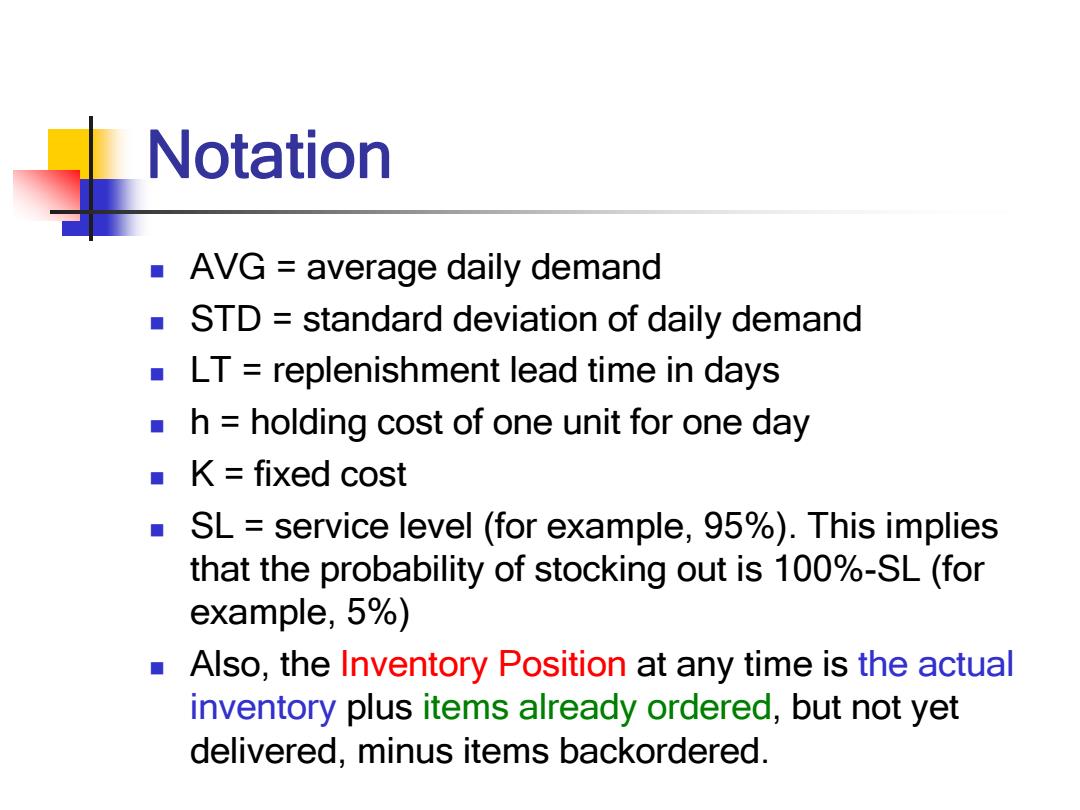
Notation AVG average daily demand STD standard deviation of daily demand LT replenishment lead time in days h holding cost of one unit for one day ■K=fixed cost SL service level (for example,95%).This implies that the probability of stocking out is 100%-SL(for example,5%) Also,the Inventory Position at any time is the actual inventory plus items already ordered,but not yet delivered,minus items backordered
Notation AVG = average daily demand STD = standard deviation of daily demand LT = replenishment lead time in days h = holding cost of one unit for one day K = fixed cost SL = service level (for example, 95%). This implies that the probability of stocking out is 100%-SL (for example, 5%) Also, the Inventory Position at any time is the actual inventory plus items already ordered, but not yet delivered, minus items backordered
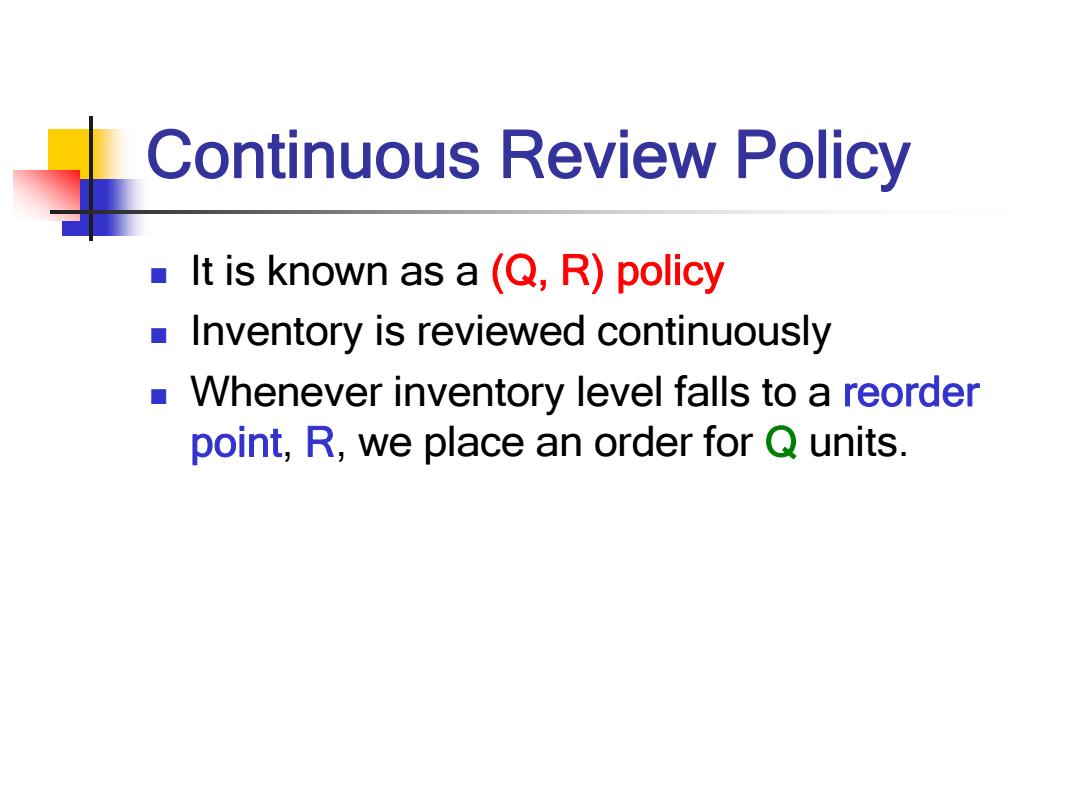
Continuous Review Policy It is known as a (Q,R)policy Inventory is reviewed continuously Whenever inventory level falls to a reorder point,R,we place an order for Q units
Continuous Review Policy It is known as a (Q, R) policy Inventory is reviewed continuously Whenever inventory level falls to a reorder point, R, we place an order for Q units